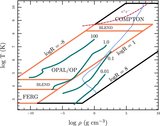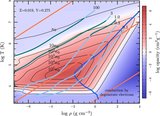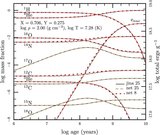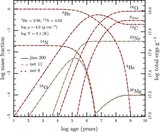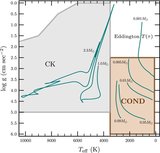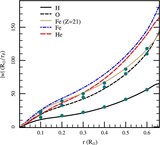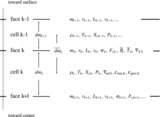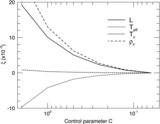Image Details
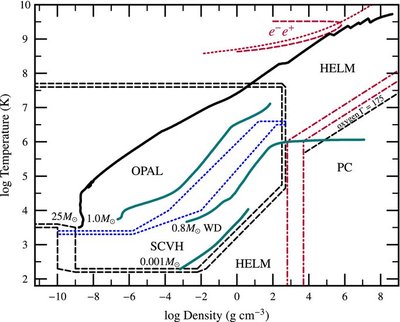
Caption: Figure 1.
ρ– T coverage of the equations of state used by the eos module for Z ⩽ 0.04. Inside the region bounded by the black dashed lines we use MESA EOS tables that were constructed from the OPAL and SCVH tables. The OPAL and SCVH tables were blended in the region shown by the blue dotted lines, as described in the text. Regions outside of the black dashed lines utilize the HELM and PC EOSs, which, respectively, incorporate electron–positron pairs at high temperatures and crystallization at low temperatures. The blending of the MESA table and the HELM/PC results occurs between the black dashed lines and is described in the text. The dotted red line shows where the number of electrons per baryon has doubled due to pair production, and the region to the left of the dashed red line has Γ 1 < 4/3. The very low density cold region in the leftmost part of the figure is treated as an ideal, neutral gas. The region below the black dashed line labeled as Γ = 175 would be in a crystalline state for a plasma of pure oxygen and is fully handled by the PC EOS. The red dot-dashed line shows where MESA blends the PC and HELM EOSs. The green lines show stellar profiles for a main-sequence star ( M = 1.0 M ☉), a contracting object of M = 0.001 M ☉, and a cooling white dwarf of M = 0.8 M ☉. The heavy dark line is an evolved 25 M ☉ star that has a maximum infalling speed of 1000 km s -1. The jagged behavior reflects the distinct burning shells.
Copyright and Terms & Conditions
© 2011. The American Astronomical Society. All rights reserved.


